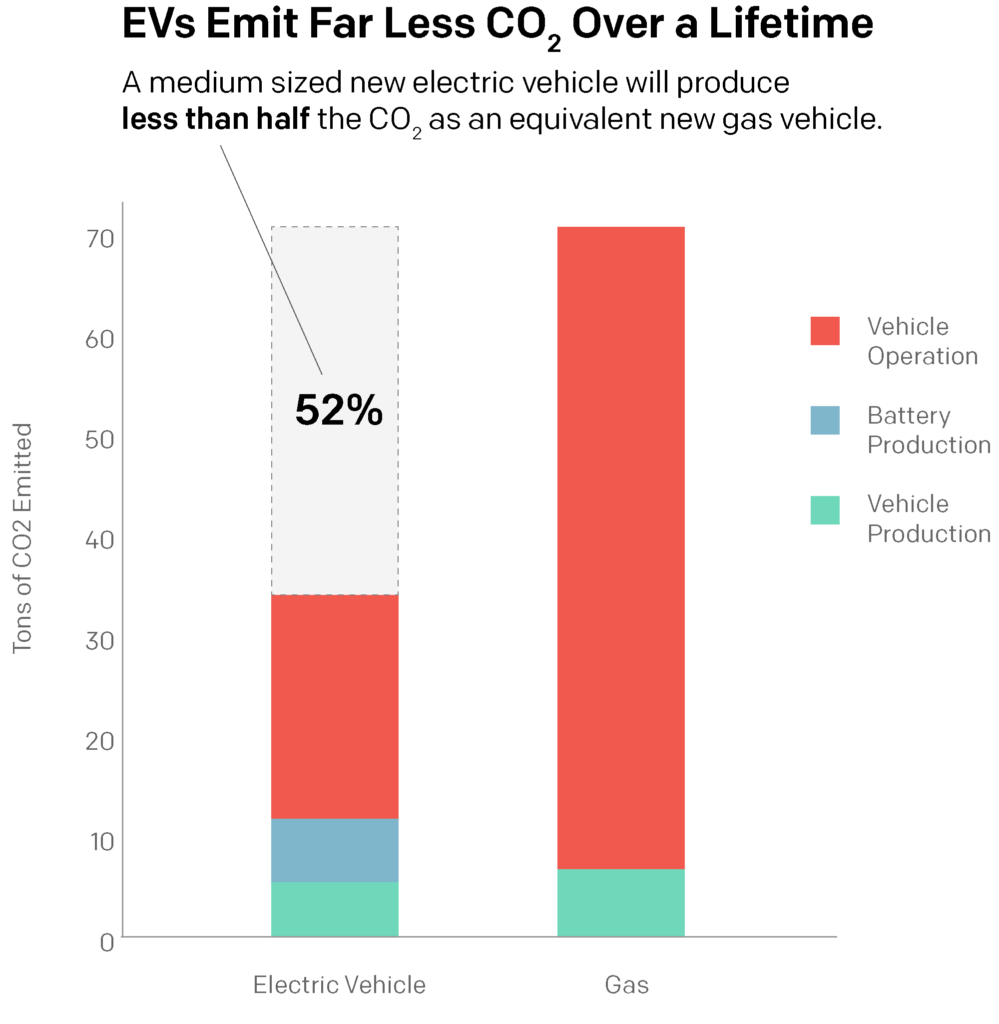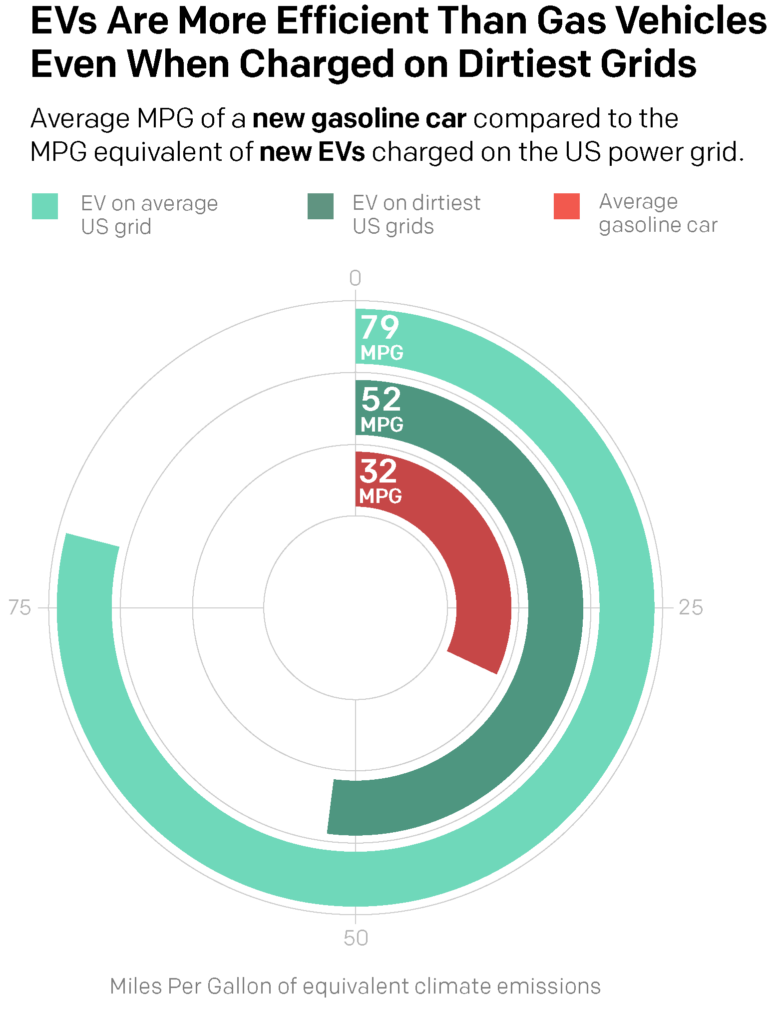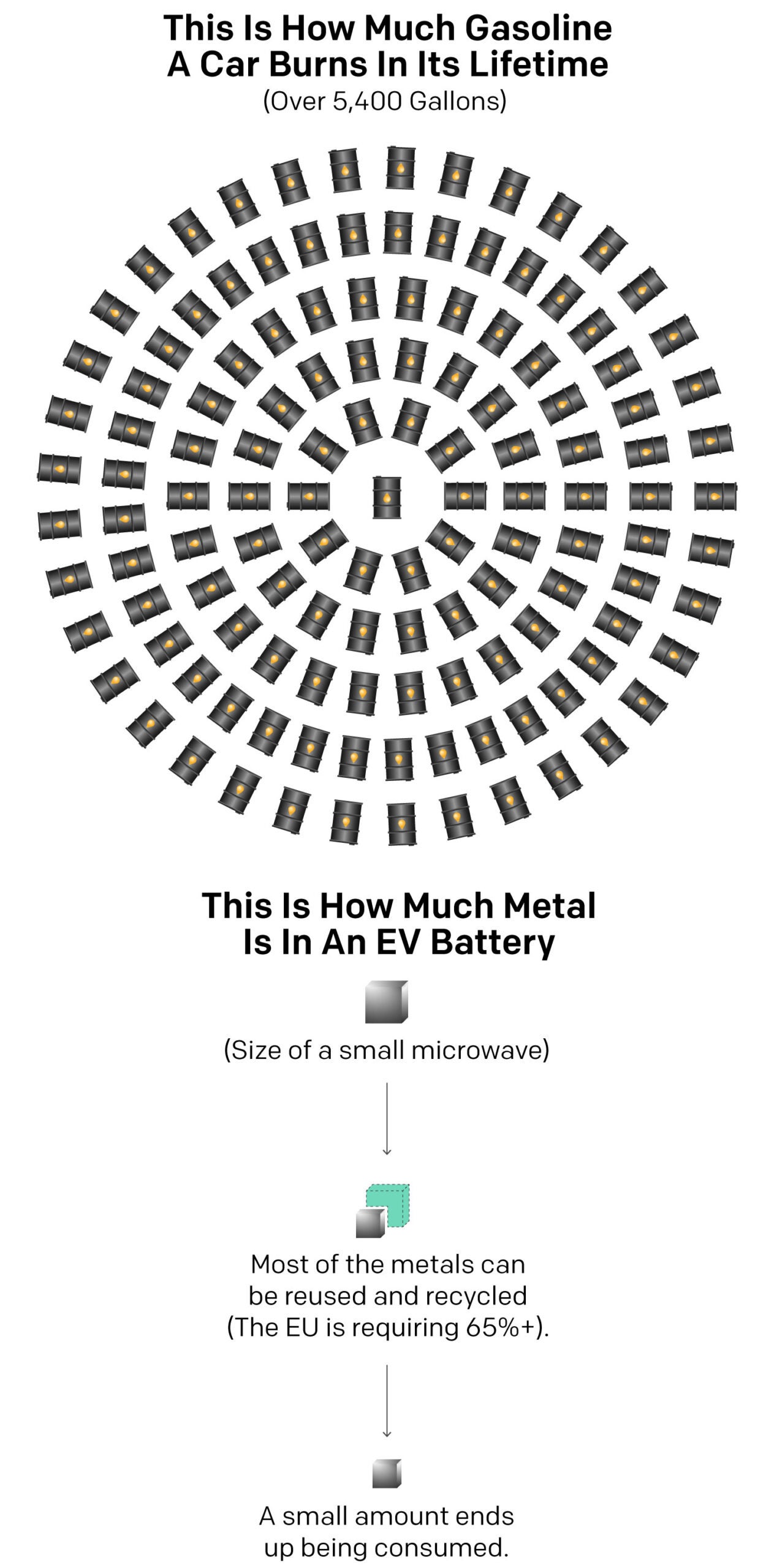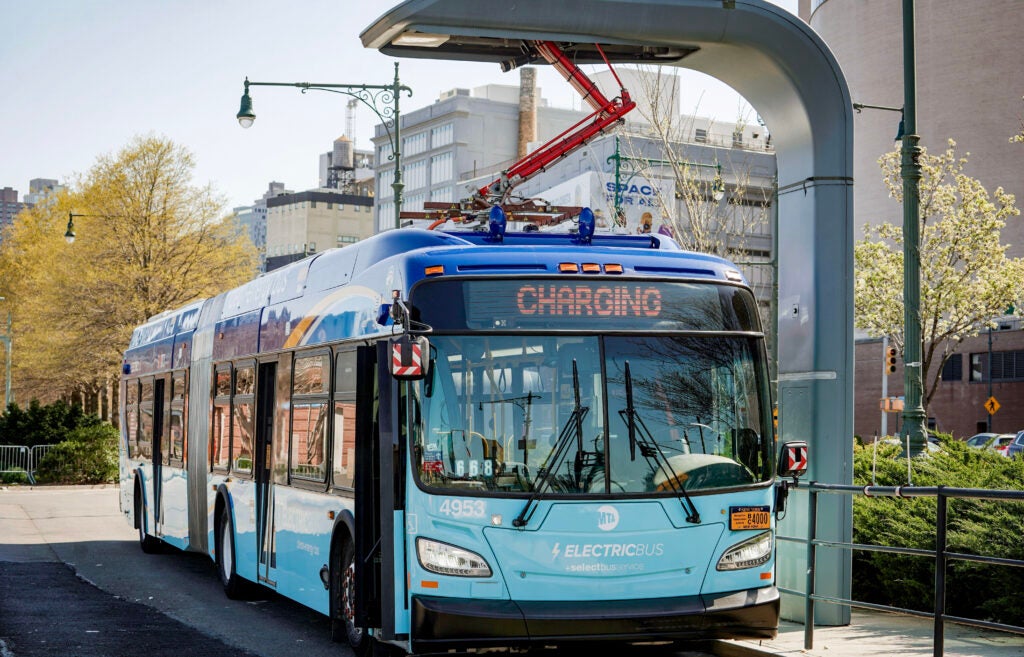Are Electric Vehicles Really Better for the Environment? Yes.
Electric vehicles stack up better than combustion any which way you look at it.

This page was published a year ago. Find the latest on Earthjustice’s work.
1. EVs are much better for the climate than gas-powered cars.
It’s not even close. Over its lifetime, the average new electric vehicle produces about half the greenhouse gas emissions of an equivalent vehicle burning gasoline or diesel. This calculation from the Union of Concerned Scientists compares total emissions from gas and electric vehicles:

Source: Union of Concerned Scientists. (Casey Chin / Earthjustice)
Even if you plugged your EV into the dirtiest power grid in America, your vehicle would still produce less global warming pollution than its gas-powered equivalent.

The average and dirtiest grids take the median from a collection of regional grids in the United States. Source: Union of Concerned Scientists. (Casey Chin / Earthjustice)
There are a few reasons why EVs come out so far ahead. Electric motors use energy far more efficiently than their internal combustion counterparts, which waste a huge amount of energy through friction. Electric motors are able to convert up to 85% of the energy they burn into motion, compared to less than 40% with a combustion engine.
But there’s also a far more obvious reason: Electric vehicles don’t require you to keep filling up the tank with gasoline and burning it. EVs do need to get recharged, and some of that electricity may be generated by burning fossil fuels. Increasingly though, the power grids in the United States are being powered by clean energy.
Here at Earthjustice, we are a major force behind the country’s transition to cleaner power. As the world’s largest nonprofit environmental law firm, we have used the power of the law to force the retirement of more than 150 coal-fired power plant units. And we are working in local and federal regulatory agencies to clear the way for more renewable power to come online.
2. EVs require fewer natural resources.
Both mining for minerals to make a battery and drilling for oil to fill a gas tank create serious environmental impacts — but the scale of impact differs wildly. There are lots of ways to compare the material resource requirements of electric versus internal combustion cars. One way to think about it is lifetime raw consumption of materials from the earth. A calculation by the European Federation for Transport and Environment found that the lifetime fuel consumption of a traditional car requires a tower of oil barrels as high as a 25-story building. The metals needed to make an EV battery, meanwhile, are about the size of a microwave oven.

Source: Transport & Environment. (Casey Chin / Earthjustice)
This chart highlights the advantages of electric cars using material resources once, whereas traditional cars require the constant extraction of more oil to fuel the vehicles. This is because mining for an electric vehicle typically happens once, while the oil drilling to fuel a combustion car lasts the lifetime of the vehicle.
Another method of comparison is between the amount of energy needed for both types of vehicles across the entire lifecycle. Battery electric vehicles use 58% less energy than a gas-powered car.
While the switch to electric vehicles will spur new mining and some of the environmental harms that come with it, the metals in electric vehicle batteries can be recycled. Once you burn the gasoline in your tank, there’s no possibility of recycling that – we will all be breathing the resulting pollution and you will need to buy that next tank of gas, again and again.
Earthjustice has been working in the halls of the federal government to reform our outdated mining laws and to establish the framework for a circular economy around electric vehicle batteries.

An electric bus at charging station in New York City. (Marc A. Hermann / MTA)
3. Electric cars alone aren’t a total climate solution. We have to think about expanding and electrifying public transit, too.
Electric cars are a huge improvement over the millions of combustion engine cars on the roads today. But one major climate solution in the mix isn’t about cars at all: It’s about getting people better access to public transit, biking, and other low-impact transportation options — and electrifying all the buses, trains, and ferries in our transit systems, to boot. To that end, the Biden administration recently announced the largest passenger rail investment since Amtrak was first created, using funds from the Inflation Reduction Act to upgrade passenger rail across the country. We need more bold federal actions like this to make public transit affordable and accessible to all.
Earthjustice has focused much of our advocacy on electrifying public bus systems in California that could spark a state-to-state climate revolution. We have also successfully fought for more federal funding for electric school buses and postal trucks. And we’ve pushed for regulations to electrify other kinds of heavily-polluting vehicles: long-haul trucking, port vehicles, garbage trucks, the list goes on.
Earthjustice’s work to accelerate the clean energy transition depends on supporters like you.
Earthjustice’s Clean Energy Program uses the power of the law and the strength of partnership to accelerate the transition to 100% clean energy.